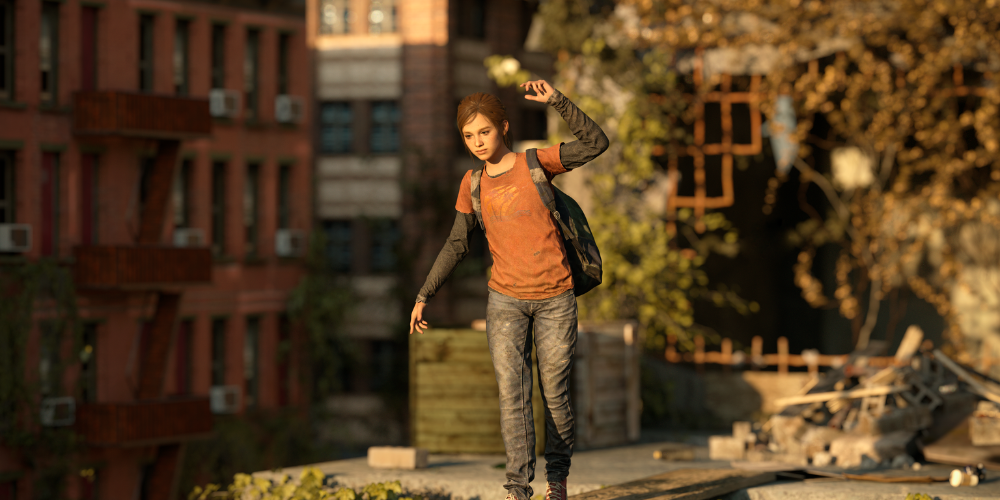
Among story-focused video games, "The Last of Us" series by Naughty Dog stands out, earning widespread praise from critics and a strong following among fans. The original game set a high watermark for storytelling, character development, and gameplay within the genre. Its sequel, "The Last of Us Part II," arrived with the monumental task of not only continuing the tale of Ellie and Joel but also evolving the gameplay mechanics to offer a fresh yet familiar experience. This comparative review delves into the gameplay elements of both titles, examining how the mechanics have been refined and expanded in the sequel and the impact these changes have had on the overall experience.
The Journey Begins: Exploring the Original Gameplay Mechanics

The original "The Last of Us" was lauded for its seamless blend of survival horror, action-adventure, and deep narrative. The gameplay was a mix of stealth, resource management, and visceral combat, punctuated by quiet moments of character development and exploration. Players had to carefully navigate through a post-apocalyptic world, making each encounter with infected or hostile survivors a tense and strategic affair. The game's crafting system encouraged scavenging for supplies, while the upgrade trees for both characters and weapons allowed for personalization in how one approached challenges.
The game's levels were linear but offered enough space for exploration to feel like a part of a larger, desolate world. Environmental storytelling was a key component, with every abandoned home or desolate street telling a silent tale of the outbreak's toll. The gameplay was tightly wound with the narrative, ensuring that every action taken by the player felt significant to the unfolding story. It was a balance that many games strive for but few achieve.
A New Chapter: The Gameplay Innovations of The Last of Us Part II

"The Last of Us Part II" took the solid foundation laid by its predecessor and expanded upon it in almost every way. While still maintaining the core elements of stealth and survival, the sequel introduced greater complexity in its combat and exploration. Players could now go prone, adding a new dimension to stealth, and the introduction of a jump button allowed for more varied environmental navigation. The game's world opened up, presenting larger areas to traverse and more opportunities for players to tackle objectives in multiple ways.
The sequel's enemies were smarter and more varied, requiring players to adapt their strategies constantly. The game also introduced guard dogs, which could track the player's scent, adding another layer of tension to stealth sections. The crafting and upgrade systems were more nuanced, offering even more depth to customization. The sequel's narrative, much like the original, was interwoven with gameplay, but it pushed boundaries by asking players to take control of two protagonists, each with unique abilities and perspectives, enriching the gameplay experience with moral complexity and emotional weight.
Narrative and Gameplay Intertwined: How Story-Shaped Mechanics

"The Last of Us" series is a testament to the power of narrative in shaping gameplay. In the second installment, the developers took the bold narrative choice to focus on dual protagonists with intersecting stories. This decision had a direct impact on gameplay, as players experienced the world through two sets of eyes, each with distinct play styles and emotional journeys. Ellie's segments were often more personal and fueled by a sense of vengeance, while Abby's portions of the game introduced new factions and expanded on the world's lore.
The narrative-driven gameplay meant that character motivations were reflected in the mechanics. For instance, Ellie's agility and resourcefulness translated into a more guerrilla-style approach to combat, while Abby's physical strength allowed for more direct confrontations. The way the story unfolded also influenced the level design, with certain areas reflecting the psychological states of the characters, turning gameplay into an extension of the narrative. It was a bold move that paid off by creating a more immersive and emotionally resonant experience.
Crafting and Survival: The Evolving Art of Making Do

Survival in "The Last of Us" series is about making the most of what you have, and the crafting system is at the heart of this experience. In the sequel, the crafting mechanics were refined to offer more strategic depth. Players had to make tougher choices about what to craft, as resources were scarcer and the needs more pressing. The introduction of new craftable items and upgrades meant that players had to think critically about how they outfitted their characters for the challenges ahead.
The survival aspects were also enhanced by the game's smarter AI and more diverse threats. The importance of scavenging was heightened, with the need to carefully search environments for the precious components required to craft life-saving items or improve weapons. This aspect of the gameplay encouraged thorough exploration and rewarded careful planning, solidifying the game's reputation as a thoughtful and challenging survival experience.
Conclusion
"The Last of Us Part II" did more than iterate on the successful formula of its predecessor—it pushed the boundaries of what is expected from a sequel. By expanding on gameplay mechanics while staying true to the narrative heart of the series, Naughty Dog delivered a game that was both familiar to fans and innovative in its own right. The evolution of the gameplay from the first game to the second is a testament to the developers' commitment to growth and excellence. As players continue to dissect and discuss the merits of both games, one thing remains clear: the "The Last of Us" series has set a new standard for how gameplay and story can combine to create unforgettable gaming experiences.